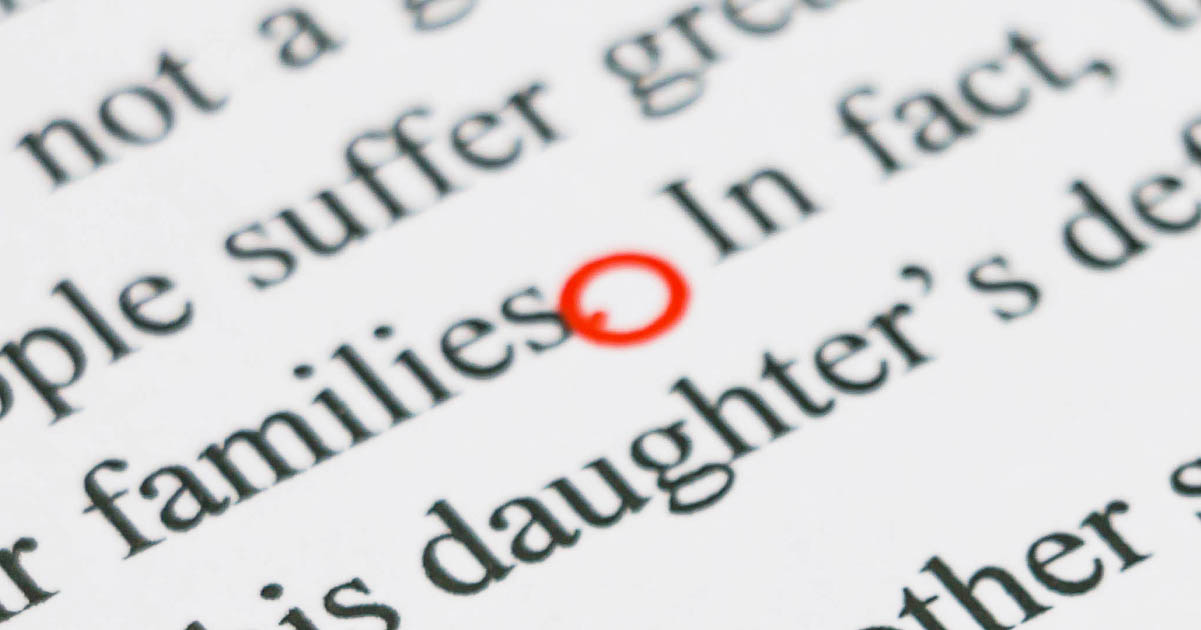
Editing Tips: Punctuation in Chicago Style
The Chicago Manual of Style (CMoS) contains a lot of information on punctuation! Some is just to remind the reader of standard usage (e.g., that a sentence should end in a period). But as a proofreader, it pays to know the subtleties of punctuation in Chicago style.
Periods and Abbreviations
When it comes to periods (or full stops), CMoS follows most standard rules. But it does have specific instructions about when to use periods in or at the end of abbreviations:
- Use periods for any abbreviations that end with a lowercase letter. This includes both using a period at the end of single-word abbreviations (e.g., vol., Mr., Dr., ibid.) and between each letter in terms where multiple words are abbreviated (e.g., a.m., p.m., a.k.a.).
- Use periods for initials in a name (e.g., A. A. Milne, C. S. Lewis). However, do not use full stops between initials that replace an entire name (e.g., JFK, LBJ).
- Do not use periods in abbreviations that contain at least two capital letters (e.g., UK, PhD).
Keep an eye out for how abbreviations are punctuated when proofreading.
Serial Commas
Chicago has a few rules about commas that are easy to overlook. The most important is that Chicago “strongly recommends” using a serial (or Oxford) comma for lists of three or more items. This means adding a comma before the final conjunction to prevent ambiguity:
No Serial Comma: She invited her parents, the headteacher and the janitor.
Serial Comma: She invited her parents, the headteacher, and the janitor.
Here, for instance, the serial comma in the second sentence makes it clear that the list contains three separate items. In the first sentence, by comparison, “the headteacher and the janitor” could be the same people as “her parents.”
Other Comma Issues in Chicago Style
Chicago suggests omitting commas in a couple of situations. The first is that CMoS recommends only using a comma before “etc.,” not after:
Commas, periods, colons, etc. are forms of punctuation.
We would usually see a comma after “etc.” here, but it is not necessary in Chicago style.
In addition, CMoS suggests using commas around “too” in the middle of a sentence:
I, too, use commas in my writing.
But it says to omit the comma before “too” at the end of a sentence:
I use commas in my writing too.
Like most things in Chicago style, these are guidelines rather than strict rules, but it is worth checking how your client is using commas if they specify using this style.
Colons and Capitalization
In Chicago style, as a rule, the first letter of the first word after a colon should be lowercase, especially if the colon is used within a sentence. For example:
I had one thing on my mind: how to use punctuation, Chicago style.
However, the first letter should be capitalized when the colon introduces:
- A series of two or more full sentences.
- Speech in dialogue, a quotation, or a question.
You can see examples of both below:
It looked like we had three options: We could hire a proofreader. We could chance it and hope for the best. Or we could learn everything about punctuation in Chicago style.
This leaves us asking one thing: How does capitalization work in Chicago style?
Possessive Apostrophes
On the subject of possessive apostrophes, CMoS says that writers should add:
- An apostrophe + “s” for singular nouns, even if they end in “s” (e.g., Socrates’s beard).
- Just an apostrophe for plural nouns that end in “s” (e.g., The players’ kits)
- An apostrophe + “s” for plural nouns that do not end in “s” (e.g., The children’s toys).
However, it also sets out two exceptions. The first is when a word is plural in form but singular in meaning (e.g., economics or United States). In these cases, only an apostrophe is needed:
As a science, economics’ status has long been debated.
The United States’ approach to foreign policy is controversial.
The other is exception applies only to the phrases “for goodness’ sake” and “for righteousness” sake.” CMoS states that these phrases only require an apostrophe, not an extra “s.” However, all other “for… sake” phrases use the standard forms above. For instance:
We must decide soon for expedience’s sake.
Are there any other elements of punctuation you would like to see explained on this blog or in the Knowadays courses? If so, leave a comment below to let us know.
Becoming a Proofreader
Want to learn more about proofreading? Our comprehensive Becoming A Proofreader course will equip you to proofread any business, creative, or academic document to a professional standard . Sign up for a free trial today.



Join the Conversation
Leave a Comment
Your email address will not be published.